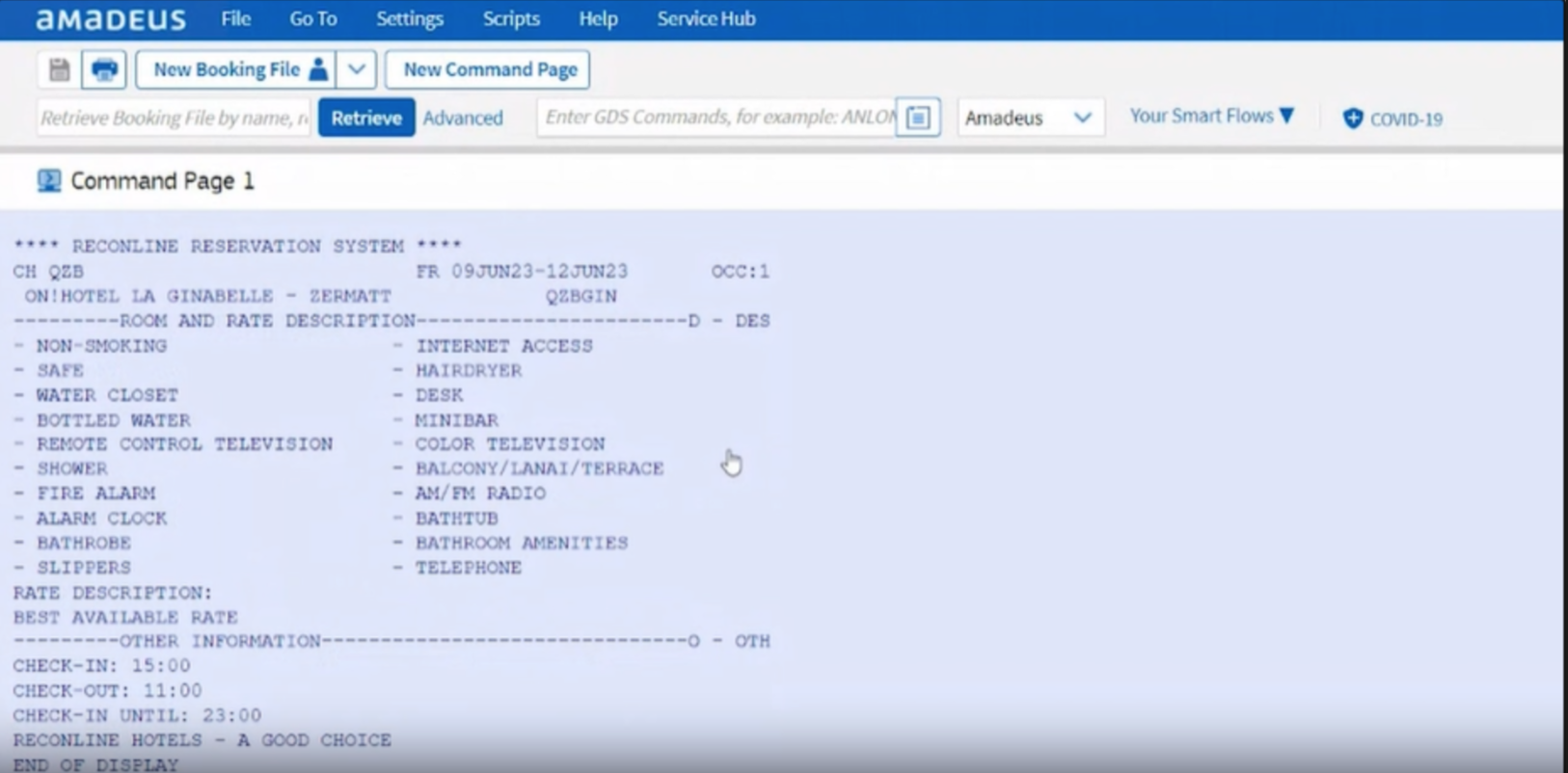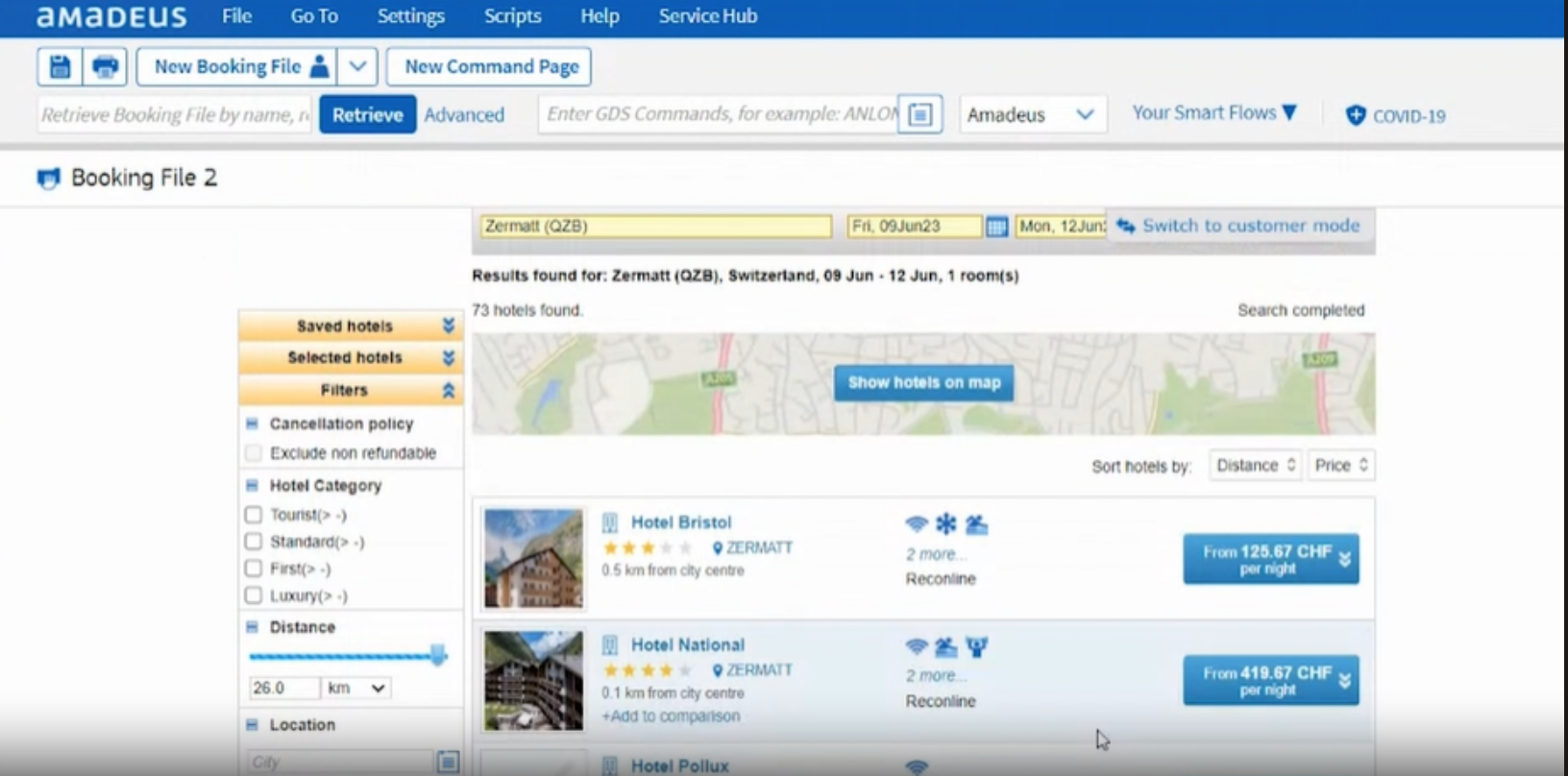
Reach more clients on a worldwide basis - this is the idea behind the use of GDS. For this to work, good content is crucial on these platforms.
This is the only way to attract the attention of travel agencies and business travel managers to your hotel. They are the first who need to be convinced, as they are the ones who recommend your hotel to the guests in the first place.
We will now take a closer look at what good GDS content looks like and examine the differences between GDS and OTA content.
The basics: Your GDS profile
First and foremost, you will of course need to include the name and address of your hotel, along with a brief presentation of the hotel. It pays to be particularly precise in GDS when describing your location. This makes your hotel more visible to clients who are searching within a specific area.
Business travelers in particular, need to know how far the hotel is from the airport, the main railway station or the trade fair. In many cases, this affects their decision significantly. It is therefore important to indicate the distance to these important locations and, whenever possible, apply their IATA codes to provide searchable and accurate information.
However, leisure travelers are also interested in the location and very often prefer hotels that are close to attractions, beaches or ski lifts. It is therefore also a good idea to indicate the distance to such locations in order to ensure that your hotel is displayed in targeted search queries.
Hotel details: The more, the better
In addition to specific information about the location and its surroundings, ensure that the details of your hotel and its rooms are also included.
In the past, this was all listed as abbreviations or bullet points on the GDS cryptic user interface. This enabled travel planners to use specific control commands to search for hotels matching the traveler's preferences.

Although these cryptic GDS versions continue to be available, most current major GDS also offer graphical user interfaces, or GUIs. They look much more similar to OTAs and it is often much easier for travel managers and travel agency staff to learn and operate them.
As images can now be displayed in these systems, it is important to share attractive pictures of your hotel to provide a good initial impression and make your hotel stand out in the results list.

The following information about your hotel and its rooms is also important:
Hotel details
-
Internet/free Wi-Fi
-
Swimming pool and/or spa
-
Restaurants
-
Car parks
-
Entertainment for families/children
-
etc.
Room details
-
The room size and layout, e.g., the sleeping and living areas ...
-
The size of the beds
-
The bathroom facilities
-
Smokers/non-smokers
-
View
-
Balcony/terrace
-
etc.
Users can apply any of these items as filters to search for your hotel. The more specific you are, the more likely you will be to appear in the search results.
It also provides travel planners with a better overview of your offer. This helps them when choosing which hotel to recommend to their clients. The most important thing here is to convince the intermediary that you can offer travelers a great experience. Only then will your offer be viewed by the potential guest.
Display the correct rates, availabilities and conditions
The Best Available Rate - or BAR - is usually displayed at the very top of the list. However, you may also display a cheaper, non-cancellable rate at the top of the list. This can help you attract more attention to your hotel from certain target groups or at certain times during the year.
This may be followed by further pricing options, such as rates with/without breakfast, seasonal offers or last-minute bargains. It may seem tempting to list as many variants as possible. However, this can easily backfire, as extensive price lists can also seem confusing and overwhelming to professional travel planners.
When quoting your prices, it is also extremely important to ensure that availabilities are up to date at all times. This will ensure that you do not forfeit revenue by inadvertently selling a low-priced deal during periods of high demand.
The same applies to conditions such as inclusions and cancellation policies. What is included in the prices? And what happens if the trip needs to be postponed or canceled? This must be clearly indicated, as guests are particularly attentive to these aspects following the Covid-19 pandemic.
You are now aware of the most important things to consider in order to correctly optimize the content on GDS, facilitate searches for your hotel and ensure your deals are attractive to travel planners. If you would like to learn even more about the topic of GDS, try reading this extensive article on the subject and discover which costs you can expect when using GDS.


